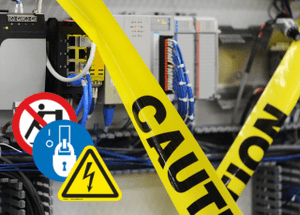Coronavirus, Manufacturing, and the Supply Chain

While the coronavirus disease 2019 (COVID-19) was first identified in China in December 2019, its transmission and escalation to a pandemic continues to have a serious, ongoing impact on a global level. In the United States, the spring brought months of mandatory shutdowns and strict social distancing measures to reduce the virus’ spread, effecting nearly all businesses and hitting those deemed ‘non-essential’ especially hard. Now, as many that faced shutdowns are looking at how to return to work safely, navigating the ‘new normal’ of today’s business climate. Organizations are faced with addressing workplace safety protocols as well as disruptions to their supply chains. While other diseases and disasters have caused impacts before, there is still a lot of uncertainty with COVID-19 as the situation evolves.
Ways
Manufacturers Can Protect Themselves
If you’re concerned about your supply chain management as the economy begins to
open up, take confidence knowing that there are steps you can take to protect
yourself. While disruptions may be likely, some proactivity now can
significantly improve your business’s outlook as the pandemic continues.
- Focus on Your People: First and foremost, create a plan for your people. Do what you can to mitigate an outbreak of the disease within your staff. Try to plan your human resourcing flexibly to allow for extra sick leave during this time.
- Know Your Suppliers: Supply chain disruptions have been catching many businesses off-guard. Focusing on your relationships with suppliers and ensuring that you have good communication can help ensure that you will be ready for issues. Furthermore, knowing if and when your suppliers are directly impacted by the virus can help you to respond more promptly.
- Evaluate Current Vulnerabilities: It’s a supply chain management best practice to evaluate your vulnerabilities. Explore which of your suppliers are most likely to be significantly impacted and what the results would be.
- Create a Backup Plan: Have a backup plan for your supply chain. Foster relationships with contingency suppliers. Consider increasing your current stock of supplies. Involve your customers and vendors in these plans. Greater openness and communication help to minimize disruptions.
These techniques can help your business to be better prepared to take on disruptions caused by COVID-19. The greatest economic impact so far has been driven primarily by uncertainty. The more planning you do now, the less uncertain your future will be. Therefore, you can move forward stronger and more confidently even as the outbreak continues.
Taking Proactive
Steps to Reduce COVID-19 Risk
It goes without saying that asking your team to cooperate in taking steps to
reduce the transmission of communicable diseases is important, and it’s
critical during this unprecedented COVID-19 situation. That includes reminders
regarding:
- Staying home when you’re sick.
- Washing your hands frequently with warm, soapy water for at least 20 seconds.
- Covering your mouth with tissues whenever you sneeze, and discarding used tissues in the trash.
- Avoiding people who are sick with respiratory symptoms.
- Cleaning frequently touched surfaces.
It’s recommended to develop a full virus exposure prevention strategy. Both OSHA and the CDC offer guidance to consider.
Posting workplace signage related to social distancing and hygiene protocols serves as an added precaution to help supplement your company’s health and wellness strategies.
Keeping Safety Obligations Top of Mind
While adopting altered safety and
hygiene protocols is critical to employee health as business resumes, OSHA is
reminding employers in all industries not to forget the importance of
non-COVID-19-related safety protocols. As employers navigate each phase of
their reopening, planning for potential hazards caused by COVID-19 and those
related to everyday work processes is recommended. Employers should be mindful
that workers might be facing increased stress levels, in addition to fatigue
and distractions, as they return to work. Ensuring that operations resume in a
safe and healthful manner is crucial to reducing workplace accidents.
Taking the time to carefully plan before speeding up operations to account for lost production time is critical as this could expose employees to additional health and safety hazards. Provide your team with refreshers on safety protocols and trainings to reduce the potential for injuries that could open the door to liability exposure. In addition, updating standard operating procedures and assessing your equipment and workplace safety visuals helps to ensure that workers are warned of on the job hazards, especially when operating with new equipment.
How Clarion
Safety Systems Can Help
As the evolving situation continues to
change, please know that the Clarion Safety team will continue to keep you at
the center of any updates related to our products and your orders,
just
as we have since early spring.
The bottom line: as essential supplier, we’re completely committed to on-time deliveries and providing you with the best customer experience possible. If you need assistance with visual communication products to have in stock for your equipment needs or to support your disease resilience strategy, please notify our team. We’re committed to our customers’ success and are happy to work collaboratively to ensure your company’s well-being and your supply chain stability during this crisis.
This blog was originally posted on 3/13/20 and has been updated with new information throughout.



